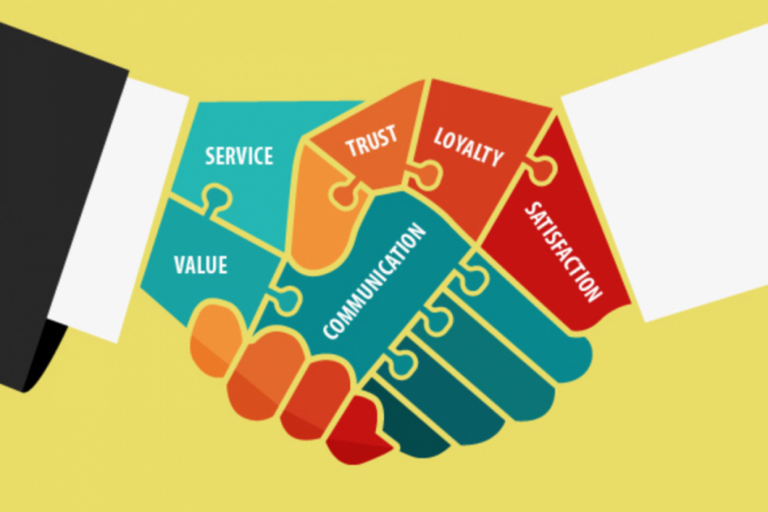The Crucial Interplay Between Snow Processes and Software

Snow Removal software solutions are often seen as the silver bullet to solve operational inefficiencies. However, the true catalyst for meaningful change isn’t the software alone; it’s the underlying processes that prepare a business to fully leverage technological tools. This blog explores why building robust operational processes is essential before implementing software, ensuring that technology enhances rather than complicates your business functions.
The Importance of Process Before Software:
Many businesses fall into the trap of adopting software solutions with the expectation that technology will magically resolve all operational challenges. In reality, software is a tool that, without the right foundation, can accelerate the creation of errors just as quickly as it can streamline tasks. The key to success lies in designing and standardizing processes that are not only efficient but also compatible with the software intended to support them.
Preparation Is Key:
Before implementing any new software, it’s crucial to take a step back and analyze your current processes. Are they clear and well-documented? Do they align with your business objectives? Here’s how to ensure that your processes are ready to integrate seamlessly with new technology:
Define and Standardize Operational Processes:
- Begin by mapping out your workflows for critical operations such as dispatching, invoicing, or scheduled services. Identify any redundancies or inefficiencies, and standardize these processes across your organization. This standardization will provide a clear framework for software to enhance rather than disrupt.
Evaluate Software Compatibility:
- With standardized processes in place, evaluate potential software solutions that align with these processes. Remember, not all software will be a perfect fit. Choose technology that can adapt to your business needs and enhance existing workflows without requiring extensive modifications.
Plan for a Gradual Integration:
- Implementing software should be a phased process, allowing for adjustments and learning. Start with a pilot program or a single department before rolling it out company-wide. This approach helps mitigate risks and eases the transition for your team.
Leveraging Software to Enhance Processes:
Once you have solid processes in place and the right software selected, it’s time to integrate the two. Here’s how software can enhance your well-structured processes:
- Automating Routine Tasks: Software excels at automating repetitive tasks such as data entry, dispatching, invoice generation at scale, service verification, and time tracking, freeing up your team to focus on more strategic activities.
- Improving Data Accuracy and Accessibility: Well-implemented software solutions ensure data is accurate and easily accessible, providing valuable insights that can drive business decisions. The perfect solution allows your team to move from continuous data entry to data review.
- Detailed Reporting / Trend Analysis: A properly implemented system will allow you to analyze all parts of your business and easily identify areas of improvement or even things you are doing well. Remember, you can never manage what you don’t measure.
The decision to implement new software should never be taken lightly, nor should it be seen as an immediate fix for operational inefficiencies. By first establishing and refining your business processes, you set the stage for software to truly enhance productivity and efficiency. Remember, the most successful software implementations are those that are thoughtfully integrated into well-designed processes, ensuring that technology serves your business, not the other way around.
Be sure to read more about how UtilizeCore can help your business tackle it’s snow operations here
You may also be interested in
Visibility After the Sale: The Key to Brand Loyalty for OEMs
- OEM
Original Equipment Manufacturers (OEMs) frequently sell their products through independent dealers—a strategy that expands market reach and leverages local expertise for better customer service. However, this arrangement can create a visibility gap once the product is in a customer’s hands. Because dealers handle much of the service and repairs, the OEM often has limited insight…
5 Common OEM Service Mistakes (And How to Fix Them)
- Assets
- OEM
1. Relying Too Much on Dealers for Service The Mistake Many OEMs assume that dealers will deliver a consistently excellent service experience. But the reality is that once equipment leaves the factory, OEMs lose visibility into the service process. If a dealer fails to provide fast, high-quality support, the customer blames the OEM—not the dealership….
OEMs: Don’t Let One Bad Experience Define Your Reputation.
- OEM
- Thought Leadership
When OEMs allow dealers or distributors to take the lead on service, they risk losing visibility over the most critical brand touchpoint: after-sales care. One poor technician visit can erase years of goodwill and instantly tarnish your brand loyalty. Here’s why owning your service delivery matters more than ever: Bottom Line: You can’t build loyalty…
Visibility After the Sale: The Key to Brand Loyalty for OEMs
- OEM
Original Equipment Manufacturers (OEMs) frequently sell their products through independent dealers—a strategy that expands market reach and leverages local expertise for better customer service. However, this arrangement can create a visibility gap once the product is in a customer’s hands. Because dealers handle much of the service and repairs, the OEM often has limited insight…
5 Common OEM Service Mistakes (And How to Fix Them)
- Assets
- OEM
1. Relying Too Much on Dealers for Service The Mistake Many OEMs assume that dealers will deliver a consistently excellent service experience. But the reality is that once equipment leaves the factory, OEMs lose visibility into the service process. If a dealer fails to provide fast, high-quality support, the customer blames the OEM—not the dealership….
OEMs: Don’t Let One Bad Experience Define Your Reputation.
- OEM
- Thought Leadership
When OEMs allow dealers or distributors to take the lead on service, they risk losing visibility over the most critical brand touchpoint: after-sales care. One poor technician visit can erase years of goodwill and instantly tarnish your brand loyalty. Here’s why owning your service delivery matters more than ever: Bottom Line: You can’t build loyalty…
In This Article
Affiliates






Affiliates








